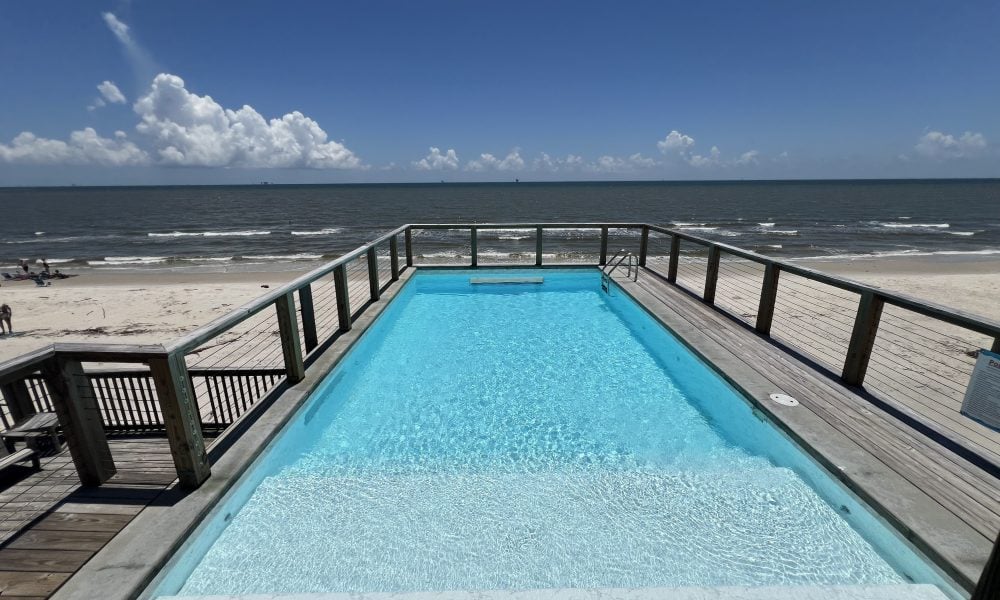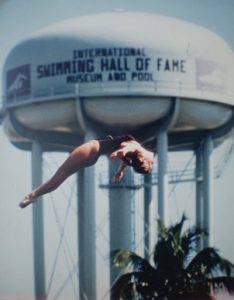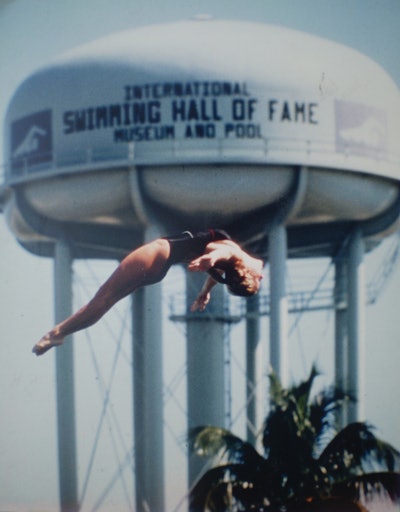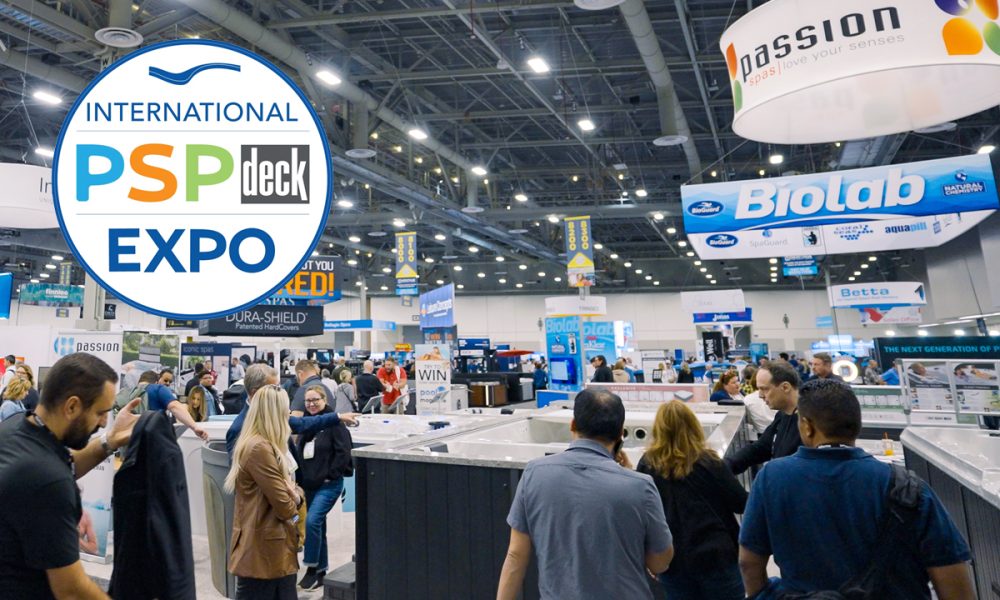A growing number of pool builders are turning to insulated concrete forms (ICFs) combined with a reinforced polyvinyl chloride (PVC) membrane to construct durable, watertight pool wall systems. This approach offers a long-lasting and visually appealing waterproofing solution that can be custom-installed on site.
These construction materials—the foam forms for the structure and reinforced PVC membranes—are readily available, allowing pool professionals to build quickly and efficiently. This flexibility enables installation of pools in virtually any size or layout, including compact backyard models with resort-style features that are increasingly in demand.
A key driver behind this method’s success is the growing popularity of reinforced PVC membranes. Long used in Europe, these membranes are gaining traction in North America for their durability, esthetic appeal, and efficient installation. Combined with ICFs, they offer professionals—including architects, engineers, specifiers, and contractors—a versatile, customizable system with greater control over schedules and construction costs.

The ideal combination
ICF construction has gained momentum over the past decade as a practical and adaptable building method in the pool industry. Originally developed for residential foundations, ICFs use interlocking expanded polystyrene (EPS) blocks to form a framework for reinforced concrete walls. This system allows pool builders to create custom shapes and sizes without using prefabricated kits or liners.
All3Pools of Missouri has been constructing ICF pools for more than a decade and recently began using reinforced PVC membranes in its projects.
“We’ve adopted a commercial reinforced PVC membrane finish on our pools,” says Patrick Quigley, CFO and co-founder of All3Pools. “The material is designed to provide a smooth, seamless surface that is resistant to chemicals, UV light, and wear, making it ideal for both residential and commercial pools.”
This combination aligns with shifting consumer habits.
“Over the next few years, consumers are likely going to stay in their homes and add a pool to their backyard rather than move to a new home with a pool to improve their long-term equity and avoid a higher mortgage interest rate,” says Aaron King, CEO and co-founder of All3Pools. “An ICF pool can be easily configured to any size or shape, and all the materials are readily available, so builders don’t have to wait on a kit or a custom-fabricated pool liner. This ICF with a reinforced PVC membrane combination gives pool builders a greater ability to control their schedule and costs.”
ICF systems and reinforced PVC membranes offer flexibility, watertight integrity, and long-term durability. With fast installation times, low maintenance requirements, and upscale esthetics, the pairing is quickly becoming a go-to solution for builders looking to meet rising demand with greater efficiency.
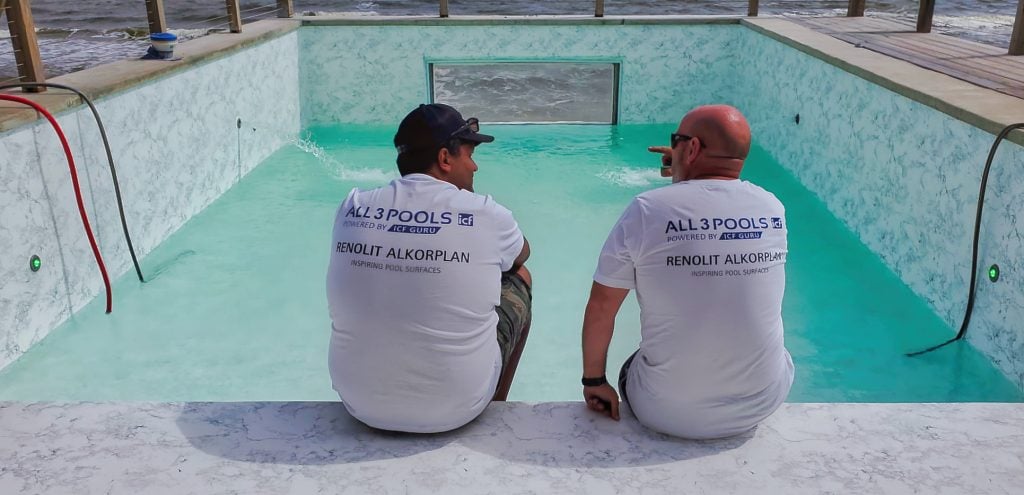
A renovation game-changer
Reinforced PVC membranes are gaining traction in new builds and as a practical solution for pool renovations. These membranes can be applied over various existing surfaces—such as plaster, tile, and gunite—allowing professionals to restore aging pools quickly and cost-effectively. Lightweight and adaptable, they offer a relatively simple learning curve and require minimal equipment, making them an attractive choice for many contractors.
All3Pools not only builds ICF pools finished with reinforced PVC membranes but has also identified the value of using these membranes for renovations—a segment with strong growth potential in the coming years.
“The material has relatively low barriers to entry and has already helped many pool professionals renovate gunite, plaster, and tile pools that would otherwise be costly to repair,” says King. “Reinforced PVC membranes offer a fast, efficient, and cost-effective alternative.”
To support broader adoption, All3Pools regularly hosts training events which are open to builders who want to learn about these new systems to help professionals incorporate these methods into their renovation offerings.
“This system can be applied over a wide range of existing surface materials to waterproof and restore the appearance of older pools,” he says.
The growing availability of durable and visually appealing reinforced PVC membranes has contributed to increased interest in this solution. “There is a learning curve, like anything else,” says King. “But it’s not overly difficult and doesn’t require expensive equipment.”
Compared to traditional methods like replastering or retiling, reinforced membranes significantly reduce overall renovation time, especially by minimizing labour. Once surface prep is complete, an average 20- x 40-ft residential pool can often be completed in three to five days. Traditional replastering requires curing time, and tile renovations are even more labour-intensive, often involving removal, surface repair, installation, grouting, sealing, and additional curing—plus regular maintenance like acid washing or regrouting over time. Reinforced PVC membranes eliminate many of these time-consuming steps and reduce long-term upkeep for clients.
As demand for renovations continues to rise, this approach provides professionals with a streamlined way to extend the life of aging pools while delivering an updated, high-end finish.
What to look for
When sourcing reinforced PVC membranes in Canada or the U.S., professionals should evaluate more than availability. Product and specification standards vary by manufacturer, and not all membranes offer the same level of performance. Look for:
● Robust formulations for long-term durability
● Internal fabric reinforcement for added strength
● Protective coatings on both the face and back
● Prompt technical support and proven references
* 80 mil PVC membrane extra thickness adds end-user confidence in product
These standards are especially important in renovation work, where surface conditions, geometry, or accessibility can present unforeseen challenges. Support from manufacturers who offer detailed drawings and responsive technical guidance can improve project success.
More control, more opportunity
As reinforced PVC membranes gain popularity in North America, more pool professionals are considering ICF construction to complement their offerings. Whether building smaller pools, introducing new pricing tiers, or improving scheduling flexibility, the ICF-PVC membrane combination delivers on all fronts.
With design flexibility, installation efficiency, and long-term performance, these systems enable builders to meet rising consumer expectations for high-quality, low-maintenance pools. For contractors looking to expand into renovations or optimize new builds, reinforced PVC membranes offer an opportunity to stay competitive, productive, and in demand.
The post How Reinforced PVC Membranes are Redefining ICF Pool Construction appeared first on PoolMagazine.com – Get The Latest Pool News.

